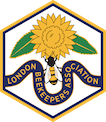
|
London Beekeepers' Association |

|
London Beekeepers' Association |
What's in Flower in April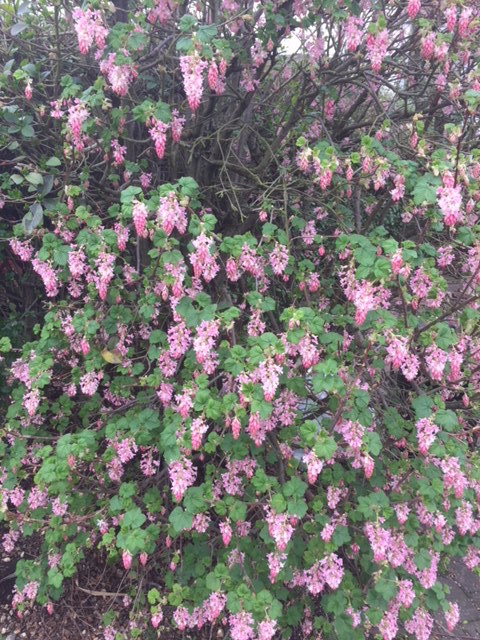 Flowering currant 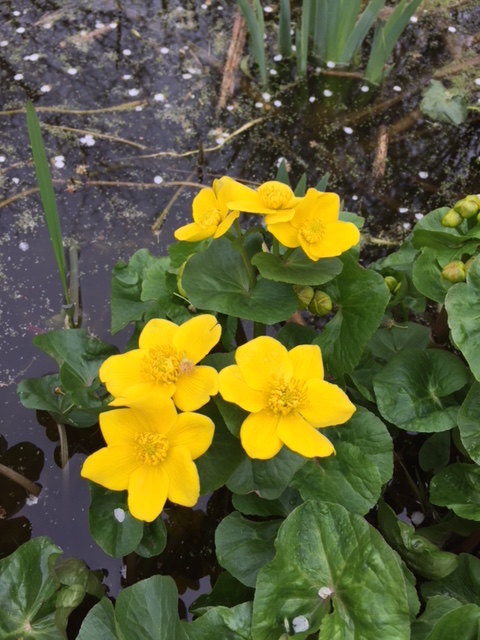 Marsh marigold 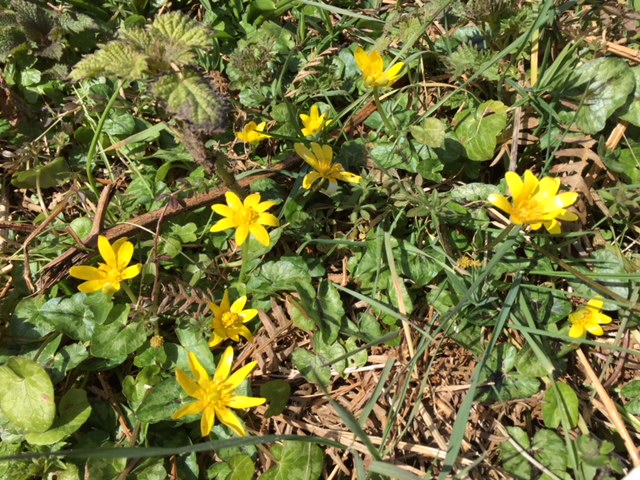 Pulmonaria 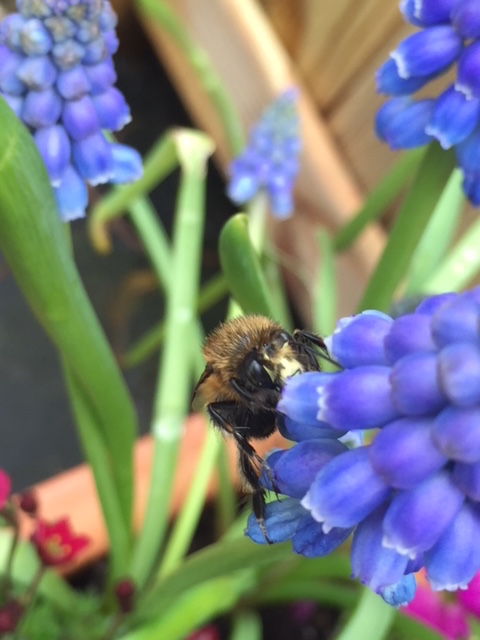 Celandine 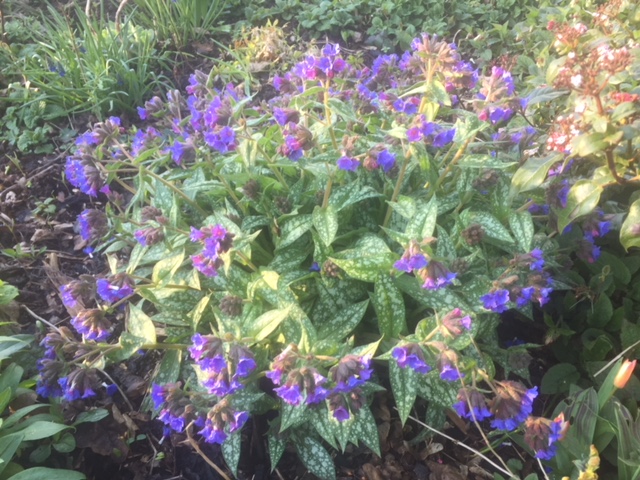 Muscari 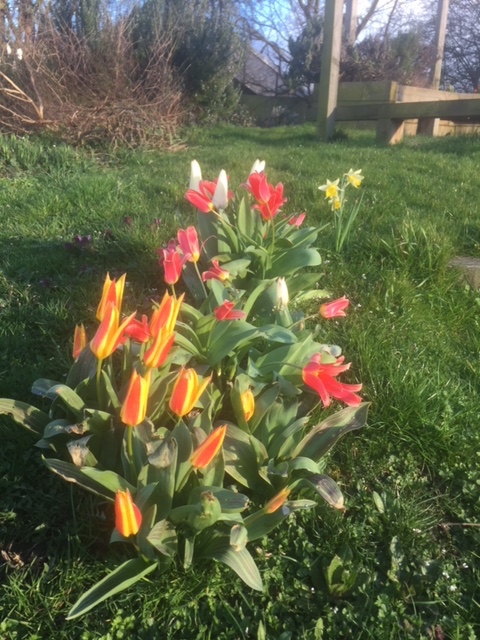 Tulips 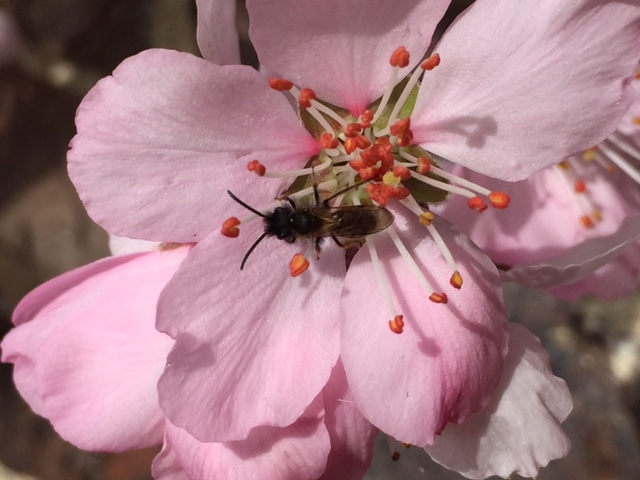 Peach blossom in Fulham palace walled garden 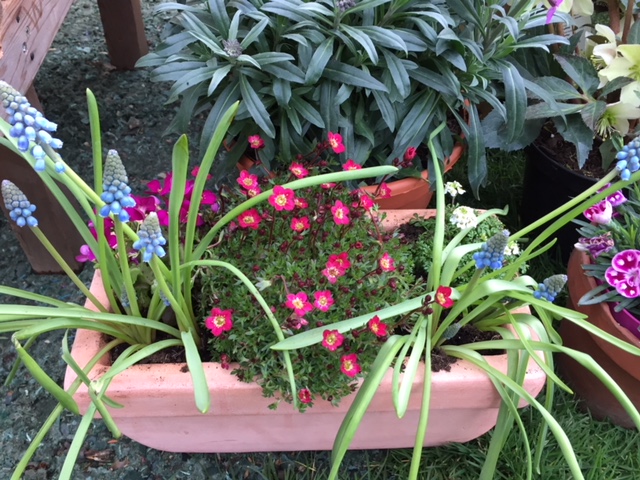 The pollinator friendly window box we took to Ascot a few years ago [What's in flower, month by month] Mark Patterson As we enter April many of our true heralds of spring have begun to flower. Among them the pretty pink Cuckoo Flower Cardamine pratensis. This dainty little pink flower is a true sign that spring `proper' has arrived. It's an important nectar plant for many pollinators and the main food plant for the larva of the Orange Tip Butterfly - a species sadly in decline. Deadnettle, Dandelions, Coltsfoot, Primulas, Wood Anenemones, Green Alkanet, Comfrey and Lungwort are at last now coming in bloom 2-3 weeks later than last year. The latter 2 in particular are popular with the Hairy Footed Flower Bee. Another flower I'm noticing lots of small solitary bees on at the moment, is Lesser Celendine. This plant is unusual in the buttercup family (\textit{Ranunculaceae) as it is one of the few buttercups that is attractive to bees. Most other Ranunculus have nectar which contains the toxin protoanemonin which bees cannot digest and can lead to poisoning. Lesser Celandine, however, is popular with many of our early solitary bees and occasionally Honey bees. Many of the Micro Andrena solitary bees feed on the golden yellow flowers which form vast carpets among cemetery, churchyards and beneath hedgerows. Another member of the buttercup family which bees may visit at this time of year is the Marsh Marigold. Most of the tulips, crocus and Winter Aconite have now long gone over but there are still Daffodils in flower (though they are of little use to our bees), alliums, wild garlic and Muscari (Grape Hyacinth) in bloom. This time last year, across much of southern England, bluebells were making an appearance. They are later this year and so far I've only seen signs of the fresh green leaves, but no flowers yet. In another few weeks, they should be out putting on a gorgeous display of blue. Blue bells may be visited by Honey bees and can produce a honey crop but they are also popular with some of the longer tongued solitary bees. Most Bluebells in London will be the invasive Spanish bluebell, but a few locations still hold stands of the native species. During the last few days Flowering Currant have started to bloom. This plant is a reliable indicator that spring proper has arrived and for me a timely reminder to undertake first proper inspections. I'm writing this 24 hours after doing full inspections on several colonies where I have had to add supers because the brood bodies are full of sealed brood and honey. If a flow starts now and the colony runs out of room they could begin swarm preparations. Other important sources of forage this month are the willows. The catkins of willow bear copious amounts of sulphur-yellow pollen. If your honey bees are returning to the hive dusted in yellow they will most likely have been visiting willow. It's not just honey bees that visit willow. Many bumblebees and Andrena bees will also collect willow pollen, and seem to time their emergence with Willow catkins. Unlike the earlier flowering catkins of Alder and Hazel willow will also produce nectar. Other trees coming into bloom right now include Field Maple, Sycamore, Poplar and Ash. April is when we normally expect to see Cherry Laurel blooming in abundance but across much of the country this evergreen shrub is delayed flowering due to the recent cold. On the 4th April I saw the first inflorescence about to burst into flower. Many of the small solitary Andrena bees rely on this shrub for pollen and nectar. As we progress through April we should expect to see the first Horse Chestnut blossom. Chestnut produces very distinctive dark brick red pollen which honey bees will collect with enthusiasm. Chestnuts are one of the best examples of how plants communicate with their pollinators; the individual blooms of the flower stalk change colour as they are fertilised to inform the bees that they need not bother to visit that particular bloom. Other trees coming into bloom will include Cherry, Plum and Apple. Currently the Blackthorn is putting on a good show of blooms and on warm days the bees may bring in a crop from this nectar source. At one of my apiaries my bees have access to about 45 hectares of mostly Blackthorn scrub and they bring back copious amounts of the brown coloured pollen and can fill a super with honey in little over a week. One of the larger gardens where I keep my Honey Bees includes a 34 tree fruit orchard. So far the nectarines, peaches and Mirabel DeNancy plum are the only trees to have flowered. The pears should begin to bloom shortly followed by the apples, Victoria Plum and Greengage. Worryingly the half dozen Crab Apples planted around the edge of the garden to cross pollinate our cultivated apples have already bloomed which begs the question what will our apples pollinate with this year? The varieties planted were supposed to flower in unison providing cross pollination and better fruit set with the heritage apple varieties which unlike many modern cultivars do not self-pollinate. On the outer edges of the city Oil Seed Rape will be starting to come into bloom and will flower well into mid-May. Beekeepers either love it or hate it for it can produce an abundance of honey but the grainy texture and trend to crystallise rock hard in the comb are drawbacks. Our member Geoffrey Hood produced a lot of Rape honey in 2015 and when I find time I intend to use it as seed honey to try and make Creamed Honey. If I'm successful you can expect a write up about that. Jobs to do in the gardenFrom now on, weeding will become a regular chore in the garden. For the past 3 weeks I have been meticulously pulling out the seedlings of Germander Speedwell, the first shoots of Bindweed and Common Cleavers which every year threaten to take over my garden. Keeping them in check requires constant attention. Weeding is a garden chore I like the least - if only it could all be about planting flowers! Prune back damaged branches on shrubs and fruit trees. Storm Katie has battered quite a few trees on my allotment which will now need pruning. Remove dead or damaged tissues cutting to the branch bark ridge. Plant out summer flowering bulbs once threat of frost has gone. |
©2025 London Beekeepers' Association |